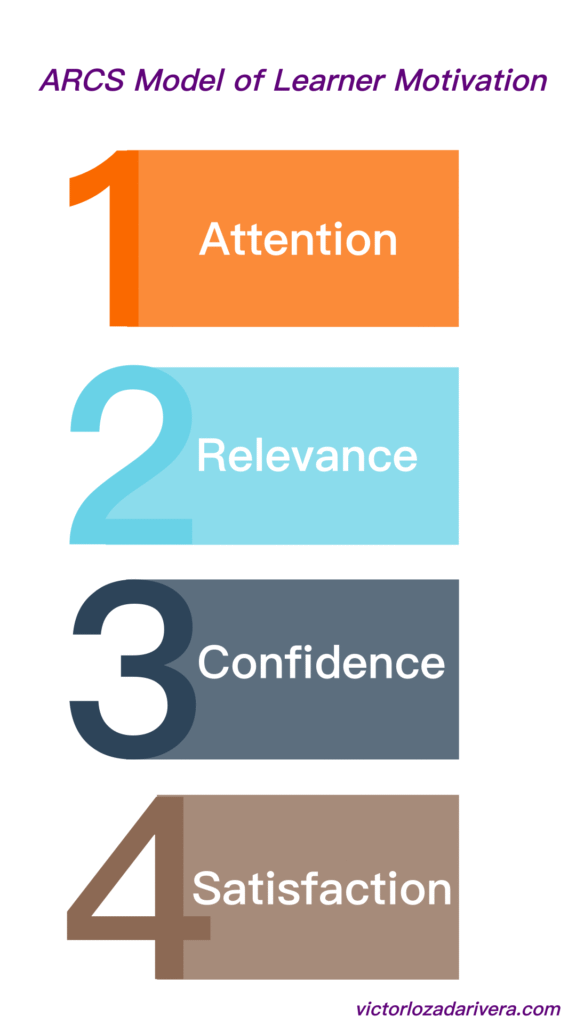John Keller developed the ARCS model of motivation to help online instructors create motivational eLearning content.
Keller’s motivation design for learning and performance model emphasizes four design considerations for the development of learning materials. The four components of motivation are, following the ARCS acronym:

The following will provides suggestions for a way in which online instructors might incorporate the ARCS model.
Attention
Within the ARCS model Keller put emphasis on generating attention and sustaining it. Attention can be divided into three categories: perceptual arousal, inquiry arousal, and variability.
- Include activities that require frequent interaction
- Include visual elements such as videos/photos/gifs
- Utilize simulations
- Vary the font/color/graphics of instruction
- Encourage debate
- Introduce incongruity
- Allow students to ask questions of each other
- Use questions to peak curiosity
- Incorporate humor
Attention is something that can sustain throughout the lesson. Keller suggest involving people and events to appeal to the learner’s emotions.
Relevance
For adult learners, knowing why they need to learn something is key. Relevance deals with the perception of whether or not the material satisfies personal or career goals of the learners.
- Base curriculum on real world scenarios
- Target content to the learner’s needs
- Have student’s make link between course materials and future goals
- Outline objectives
- Allow topic choices in activities
- Implement group work
- Use student experiences
- Use personal pronouns and student names
- Provide supplemental information/links
- Use guest speaker
Content being presented might also prove relevant in the pursuit of other learning goals. If the content of one course can be applied to another, this can be brought to the learner’s attention to increase motivation.
Confidence
Once you have captured learners’ attention and they perceive it is relevant, then the instructor’s task is to convince them that they are capable of accomplishing the task at hand. Anxiety and fear are much greater parts of students’ lives than teachers realize.
- Use a visual appealing professional design to give credibility
- Utilize a simple interface
- Include practice questions/reviews
- Provide grading rubrics
- Establish realistic expectations about requirements for success
- Scaffold the course appropriately
- Identify areas of problematic concern
- Allow students to explain their strengths or areas of expertise
- Make content challenging but achievable
- Allow learner to control pace and sequencing
When instructors provide formative feedback, they should emphasize students’ strengths, as well as highlight specific ways in which they can grow.
Satisfaction
Intrinsic motivation is one of the most important elements of satisfaction. Extrinsic motivation, however, is more easily influenced, primarily through the use of feedback.
- Provide supportive feedback
- Reinforce and provide praise
- Allow hands-on practice
Allowing students to apply what they learn as soon as possible to build motivation through satisfaction.
Conclusion
Keller’s ARCS Model has many applications in online education. By including the elements of Attention, Relevance, Confidence, and Satisfaction, instructors can increase the motivation of learners even if they are geographically separated and content is taught asynchronously.
Tell me what you think of the ARCS model in the comments below. Have you found success in using the model?


